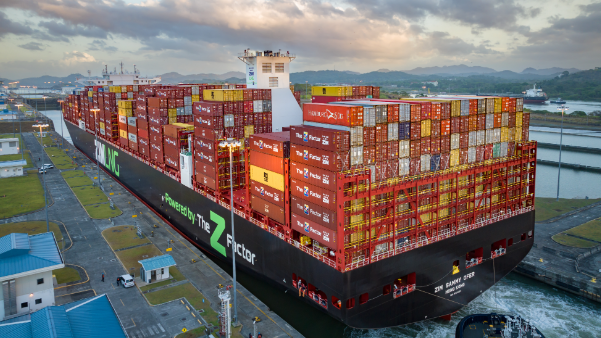Hapag-Lloyd has a “Plan B” ready to go if the international shipping industry does to the shorter Red Sea and Suez Canal route between Asia and Europe.
The plan would be implemented immediately if and when the time is right, Hap-Lloyd CEO Rolf Habben Jansen said during a virtual panel discussion with Lars Jensen, a consultant with shipping consultancy Vespucci, and Michael Aldwell, executive president of sea logistics for the Kuehne Nagel Group.
Aldwell said that the lines have good plans in place for both the Cape the Suez Canal routings, but a gradual reopening of the Suez Canal could lead to a spike in vessel arrivals and delays at European ports of destination.
Jansen agreed with the assessment, but he added that the necessary conditions could find a confluence point after the Chinese New Year. Next year, the end of the Chinese Year is very late, on March 3, which provides enough time to reach a stable cease-fire agreement, and the trial voyages could also prove the line’s safety the seafarers, the insurance companies, the shippers, and the carriers, thus boosting confidence on all sides.
“I pointed after Chinese New Year this would at least mitigate some of the issues that Michael mentioned. Because I fully agree, we will have a spike in vessel arrivals in Europe, and all kinds of issues, Jansen said.
He went on to say that if the transition were to take place during the Chinese New Year lull, “then at least the spike vessel arrivals will happen in a period where many of the lines cancel voyages, so it’s easier to reorganize the network.” It wouldn’t solve all issues, but it would limit some of the challenges that a return to the Suez Canal would bring.
He also sees challenges ahead for carriers, but he said “We have a Plan B to come back [to the Suez Canal], but I also acknowledge that it’s going to be very difficult to come back to the S Canal.”
According to Jansen, there have been nearly 100 attacks on the international shipping in the Red Sea, south of the Suez, and in the vicinity of the Port of Jeddah, Saudi Arabia, “that’s a pretty big number,” he emphasized, and although the risk is great the return will eventually happen, and the carriers will strive to make the transition “in an orderly way.”
“The risk of a major congestion is very, especially in the Mediterranean, but also in the north of Europe,” Jansen said, “and I think that if we had some time to prepare in advance, it would help us to kind of control the situation to some extent. But for the next couple of months, we have to work very hard to make sure that we have a certain amount of in our services.”
He also pointed to another potential challenge: when vessels arrive in Europe in larger numbers, there will be a massive amount of cargo flooding ports, and the challenge for shippers will be to get that cargo out of the ports. “When you suddenly receive a stock that is two or three times as high as usual it will be very difficult to move these containers from the stackyard,” Jansen said. “And that would be probably the biggest concern that I have because that’s not that we can fully control.”

Last
Breaking news! A tanker on route experienced a toxic substance leakage, resulting in crew members being poisoned and injured.
At around 5:30 p.m. local time on November 19th, the oil tanker "Swanlake", 13 Russian crew members, experienced a toxic substance

Next
The return of the Star Line to the Red Sea is imminent, waiting for insurance approval to "release"!
Israeli container shipping line Zim believes the likelihood of a return to the Suez Canal and the Red Sea lanes is increasing.Duri
